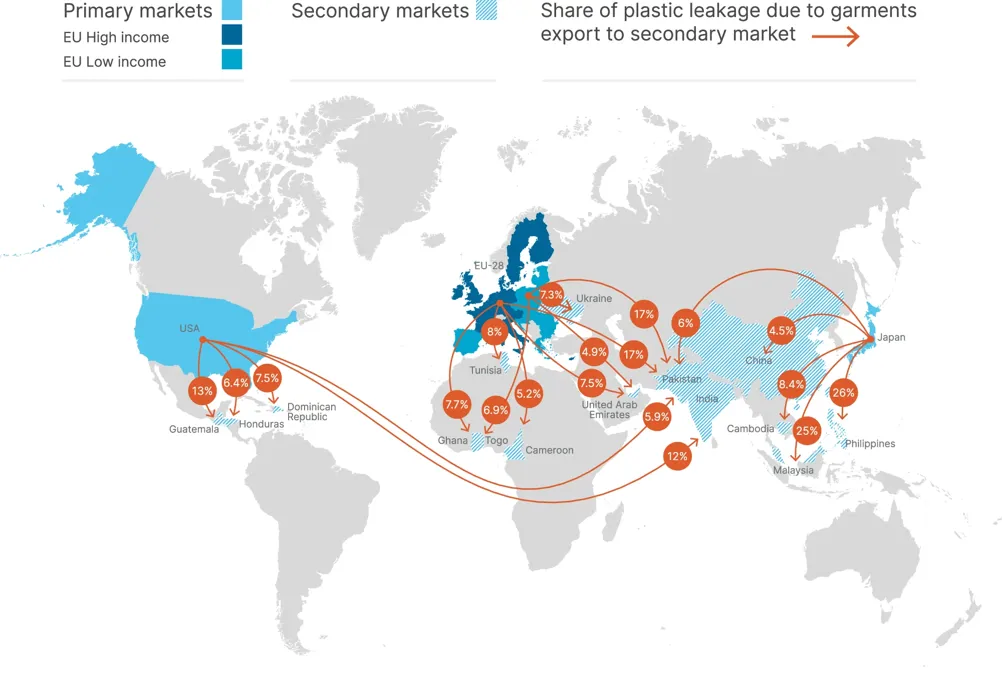The study found that global apparel consumption resulted in over 20 million tonnes of plastic waste in 2019. Around 40 per cent of that waste may have been improperly managed and become environmental pollution, a process known as ‘plastic leakage.’
The NC State researchers divided the textile waste between two sources: clothing made from synthetic materials like polyester, nylon and acrylic; and clothing made from cotton and other natural fibres.
They also looked at plastic waste generated across an apparel product’s ‘value chain,’ which refers to the entire lifecycle of a product – including, for example, not only the piece of apparel itself, but the plastics used to wrap it.
“We analysed data on imports, exports and apparel production in countries all over the world,” Richard Venditti, professor of paper science and engineering at NC State and co-author of the study, said in a statement. “Then we compared that to existing global information on different stages of the apparel value chain to estimate how much plastic leaks into the environment at each of those points.
“Much of the plastic waste that leaks into the environment comes from clothes that are thrown away, especially synthetic apparel. There is also waste from manufacturing, packaging and even from tyre abrasion during transport, as well as microplastics which get pulled into the water when we wash our clothes.”
The study found that synthetic apparel was the largest source of plastic waste. The synthetic value chain accounted for 18 million tonnes of waste in 2019, making up 89 per cent of all plastic waste from the global apparel industry that year. Of that, researchers estimated that around 8.3 million tonnes may have leaked into the environment.

Cotton clothing accounted for 1.9 million tonnes of plastic waste, with the final 0.31 million tonnes coming from fibres other than synthetic textiles or cotton. As opposed to the end-of-life plastic waste created by discarded synthetic apparel, the researchers found that plastic waste from cotton and other fibres came almost entirely from the plastic used in packaging.
It was also found that where apparel was sold is not necessarily where plastic waste leaks into the environment. For apparel originally sold in high-income countries like the US and Japan, most of the resulting pollution happened in lower-income countries where these pieces of clothing might be sold in the secondary market.
“What we’re seeing is that in countries like the United States, we have a ‘fast fashion’ culture where we buy a lot of clothes and don’t keep them for very long,” said Venditti. “When we discard those clothes, they either go into landfills or, more often, they end up in thrift stores. Some of the clothes that go to these stores are sold in the US, but often they end up going to other countries that do not have waste management systems robust enough to handle that kind of volume. That is where you end up with a large amount of plastic leaking into the environment.”
The study concluded that significant changes in the apparel sector need to be made to move the industry toward a more circular framework, where materials are recycled and do not become waste. The study also recommended increasing the use of renewable, non-synthetic textiles.
The paper, ‘The global apparel industry is a significant yet overlooked source of plastic leakage,’ was published in Nature Communications and can be read in full here.











Guest blog: exploring opportunities for hydrogen combustion engines
"We wouldn't need to pillage the environment for the rare metals for batteries, magnets, or catalisers". Batteries don't use rare...